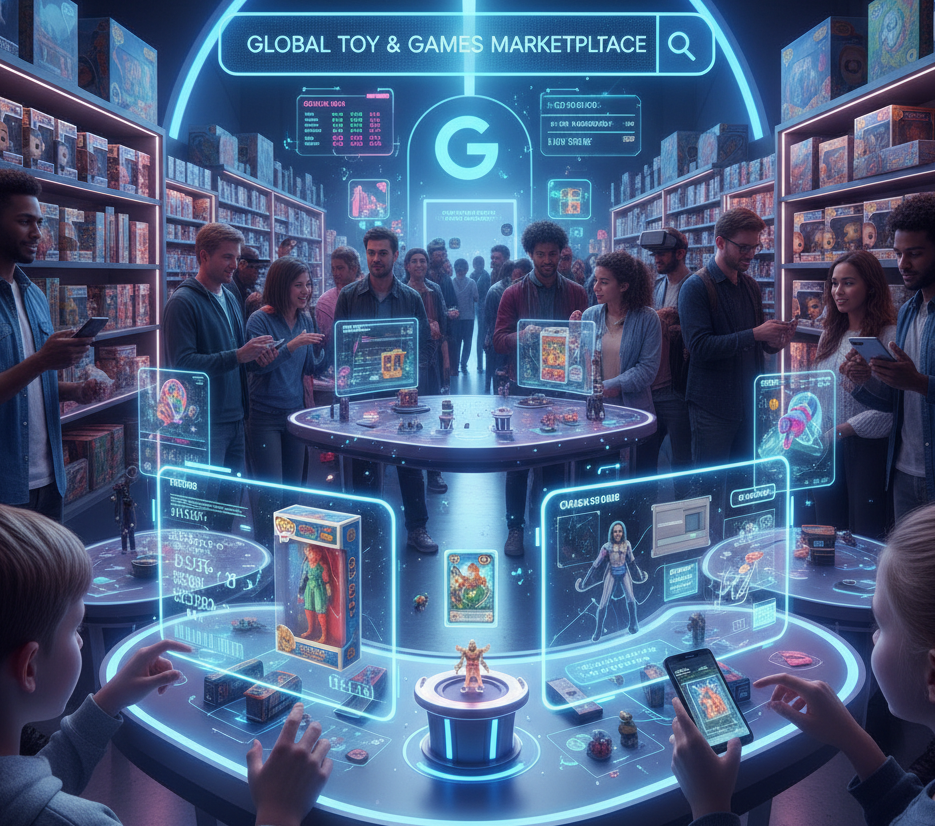The global toy and games market is a vibrant, multi-billion-dollar industry that continues to evolve at a rapid pace. From classic board games to cutting-edge video games and collectible action figures, the ways we buy, sell, and trade toys have transformed dramatically. This article delves into the current landscape of toy and games transactions, offering insights for both seasoned collectors and new enthusiasts. We’ll explore key trends, popular platforms, and best practices for navigating this dynamic market.
The Digital Revolution: Shifting from Brick-and-Mortar to Clicks
For decades, the primary way to acquire toys and games was through physical retail stores. Trips to Toys ‘R’ Us, local hobby shops, or department store toy aisles were a cultural ritual for generations of children and their parents. While these stores still hold a significant place, the digital revolution has fundamentally reshaped the market.
E-commerce: The Dominant Force
Online marketplaces have become the dominant force in toy and games transactions. Giants like Amazon, eBay, and specialized platforms such as StockX and Funko’s own online store have made it possible to buy almost any item, from anywhere in the world, with just a few clicks. This shift has several key implications:
- Unprecedented Selection: Online platforms offer a virtually limitless catalog of products. A collector in a small town can now access rare, vintage, or international items that would have been impossible to find locally.
- Price Transparency: With a wealth of data available, consumers can easily compare prices, read reviews, and track market trends. This empowers buyers to make more informed decisions and often find the best deals.
- The Rise of Niche Markets: E-commerce has fostered the growth of highly specialized markets. Platforms dedicated to trading card games like Magic: The Gathering, collectible action figures, or specific video game consoles have created dedicated communities and streamlined transactions for these niche products.
Social Media and Community-Driven Transactions
The rise of social media has added another layer to the toy and games market. Platforms like Instagram, Facebook, and TikTok are not just for sharing content; they have become powerful tools for buying and selling.
- Instagram Shops & Live Sales: Many independent toy sellers and collectors use Instagram to showcase their inventory. Live sales, where items are auctioned off in real-time, have become a popular and engaging way to sell. The visual nature of Instagram is perfect for displaying detailed photos and videos of products.
- Facebook Marketplace & Groups: Facebook groups dedicated to specific toy lines or game genres are bustling hubs of activity. Members can post items for sale, arrange trades, and connect with other enthusiasts. This peer-to-peer model often results in more personal transactions and lower fees than traditional marketplaces.
- TikTok’s Influence: The short-form video platform has a huge impact on what’s trending. A viral video unboxing a new toy or showcasing a rare collectible can cause an immediate spike in demand and price. Sellers and brands are leveraging TikTok to create viral marketing campaigns that drive sales.
Key Transaction Trends and Their Implications
Understanding the following trends is crucial for anyone involved in the toy and games market.
1. The Collectibles Boom
The lines between toys, games, and collectibles have blurred. Many modern “toys” are designed with a collector in mind. Brands like Funko Pop!, NECA, and Hot Toys produce highly detailed figures that are often bought for display rather than play. This trend has several implications:
- Higher Price Points: Collectible items often command premium prices, especially limited-edition or “chase” variants.
- Focus on Condition: For collectors, the condition of the packaging and the item itself is paramount. A mint-in-box (MIB) item is significantly more valuable than one that has been opened or damaged.
- Speculation and Investment: Some collectors view their items as investments. They track market values and buy and sell based on speculation, much like the stock market. This has led to the emergence of platforms like StockX, which treat collectibles with the same rigor as sneakers or high-end watches.
2. The Subscription Box Model
Subscription services have found a strong foothold in the toy and games market. Services like Loot Crate, Funko’s “Legion of Collectors,” and various board game subscription boxes offer curated collections of items delivered to your door each month.
- Convenience: Subscribers receive a steady supply of new items without having to hunt for them.
- Exclusivity: Many subscription boxes include exclusive items that cannot be purchased elsewhere, creating a sense of urgency and value for subscribers.
- Discovery: These boxes introduce consumers to new brands, products, and genres they might not have discovered on their own.
3. The Resale and Secondary Market
The secondary market for toys and games is now a major part of the industry. Sites like eBay, Mercari, and even local flea markets are crucial for buyers looking for discontinued or vintage items.
- Vintage Value: Retro toys and games from the 80s and 90s, such as original Transformers, He-Man, or classic Nintendo cartridges, can fetch astronomical prices. Nostalgia is a powerful driver of value.
- Authenticity and Scarcity: A significant challenge in the secondary market is ensuring authenticity. Counterfeits are a growing problem, especially for high-value items. Scarcity, whether due to a limited production run or a product’s age, is the primary driver of value.
Best Practices for Buyers and Sellers in the Modern Market
Navigating this complex market requires a mix of common sense and specialized knowledge.
For Buyers:
- Do Your Research: Before making a purchase, especially for a high-value or vintage item, research its market value, common fakes, and seller reputation. Use tools like eBay’s “Sold Listings” to see what items are actually selling for.
- Communicate with Sellers: Ask questions about the item’s condition, origin, and any potential defects. Request detailed, high-resolution photos from multiple angles.
- Use Secure Payment Methods: Always use a secure platform with buyer protection, such as PayPal Goods and Services, which offers recourse if the item is not as described. Avoid bank transfers or other less secure methods.
For Sellers:
- Be Detailed and Honest: Provide a clear, detailed description of your item, including any flaws or damage. Take high-quality photos that accurately represent the item’s condition.
- Price Competitively: Research what similar items are selling for and price your product accordingly. Consider the platform’s fees and shipping costs.
- Package Securely: For collectibles, proper packaging is non-negotiable. Use sturdy boxes, bubble wrap, and packing peanuts to ensure the item arrives in the same condition it was sent. This is crucial for avoiding disputes and maintaining a good reputation.
- Build a Brand and Community: Whether on Instagram or eBay, building a reputation for honesty and quality service is key. Engage with your followers, respond to inquiries promptly, and go the extra mile to provide a great customer experience.
The Future of Toy & Games Transactions
Looking ahead, we can expect continued innovation in how we buy and sell global toys and games. Augmented reality (AR) and virtual reality (VR) could soon allow buyers to “inspect” a digital 3D model of an item before purchasing it. The integration of blockchain technology could also provide a secure way to verify the authenticity and ownership history of high-value collectibles, combating the issue of counterfeits.
The toy and games market is more than just a place to buy products; it’s a vibrant ecosystem of collectors, players, and entrepreneurs driven by passion and nostalgia. Whether you’re a parent buying a new toy for your child, a gamer seeking a classic title, or a collector on the hunt for a rare find, understanding the dynamics of modern transactions is the key to a successful and rewarding experience. The digital age has made the world of toys and games more accessible and exciting than ever before, and its evolution shows no signs of slowing down.







